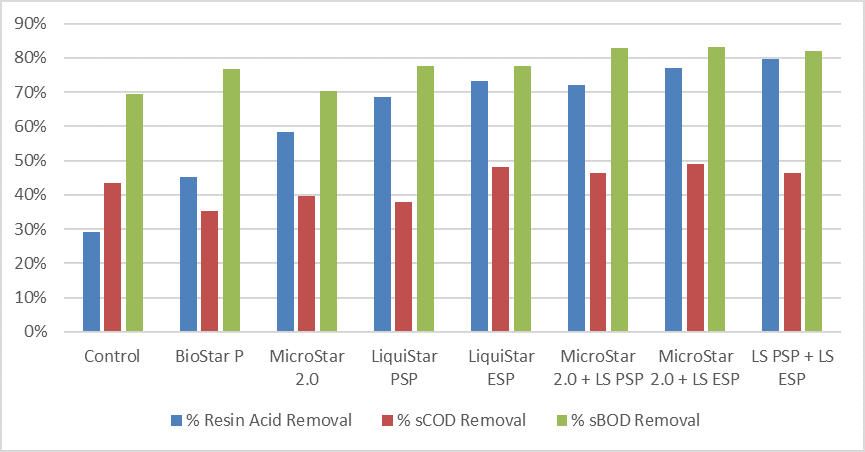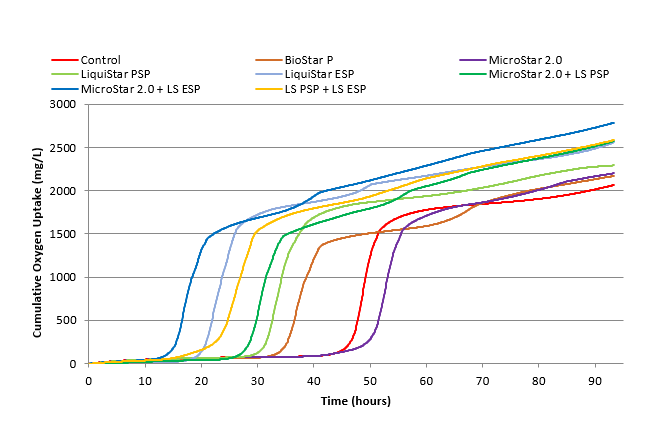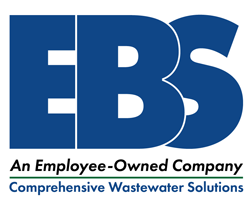The Treatability Lab is always interested in investigating new applications and expanding the knowledge on the capabilities of EBS’s current bioaugmentation products. Recently, there has been an interest in the ability of these products to help treat wastewaters with specific chemicals of interest. There has been some attention paid to the biodegradation of resin acids in pulp and paper mill effluents and we designed an experiment aimed at determining the ability of our current products to degrade resin acids present in an effluent sample from a pulp and paper mill.
BioStar P, MicroStar 2.0 (MS 2.0), LiquiStar PSP (LS PSP), and LiquiStar ESP (LS ESP) were the products tested in this experiment. Each product was added to a pulp and paper mill effluent that is known to have issues with resin acids. Each product was tested on its own as well as combinations of MS 2.0 + LS PSP, MS 2.0 + LS ESP, and LS PSP + LS ESP. Bottles were connected to a closed system respirometer to monitor oxygen uptake over the course of the experiment. After approximately 96 hours, the samples were tested for COD, BOD, and resin acid removal.
LS PSP and LS ESP removed 69% and 73% of the resin acids present in the influent, respectively, compared to 29% removal by a control sample containing no bioaugmentation. Combining LS PSP or LS ESP with MS 2.0 marginally increased resin acid removal to 72% and 77%, while combining LS PSP with LS ESP increased removal to 80%. The addition of MS 2.0 to either LS PSP or LS ESP did have an effect on oxygen uptake, shortening the time for the bacteria to reach log growth, which is the time when the bacteria population is doubling at a constant rate and taking up available food and nutrients.


This data gives an indication that either LS PSP or LS ESP could be used as a supplemental bioaugmentation product to improve the removal of resin acids in a wastewater treatment system. Follow up experiments can help to further understand how to best apply the products to these systems and also determine why the combination of MS 2.0 with either LS PSP or LS ESP led to a shorter time before log growth was reached compared to the LS PSP or LS ESP alone.

